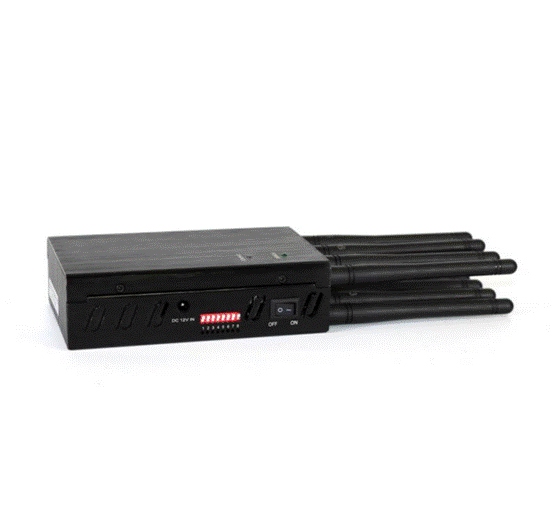Most people aren’t familiar with jammers, or they maybe think that’s something in video games—bias and rumors surrounding it. In fact, the jammer is a very powerful weapon to protect your privacy and safety. With many years of experience using these devices, I am able to offer a more objective opinion. My first signal jammer was BD523 from Brouilleurdonde.com. This model is still available for purchase today.

First things first, there are several types of jammers that can be found online:
- Portable jammers run on an internal rechargeable lithium battery.
- Desktop jammers
- Pocket jammers or mini jammers
Mine is a portable jammer which I think it’s perfect for using outside. And it’s frequency ranges cover GSM, CDMA, Wifi, and 3G/4G.
Although I won’t voluntarily deal with GPS jammers, most of the jammers work in the same way: transmitting radio waves to disrupt the network you want to jam to destroy the communication between the sender and recipient.
The one I brought is one of the most popular models, as you can still find it today. It comes in a package and a plug converter.

Now I am going to evaluate the pro and cons of this product from different angles so you can get a quick understanding of how the jammer works in the real world.
Batteries
It took a while to load the models, and it was very fast to unload them. The models I brought required one night of charging and one hour of operation the next day. It would also self-discharge quickly if it weren’t in use. It was impossible to know when the charge was finished.
But these problems have been fixed in the recent new launch jammer. It would help if you waited for the diodes to turn on to confirm that the charge has been fully discharged. And the jammer does not seem to be discharging over time.
Reach and efficiency
It’s very variable. Some people are disappointed because they expect too much. It is generally true that interference with the signal will be more complicated if the network around you is stronger. For example, you can’t be expected to block your mobile phone if you are standing near the cell tower because the signal surrounding it is very strong.
Outdoors: As per the product description, my jammer can reach 20 meters. I believe this figure to be correct.
Indoors: It all depends on the structure and strength of the signal. For example, I was successful in blocking my phone in supermarkets.
Public transport: Everything depends on the strength and timing of the signal. I was able to get excellent results with trains and buses.
What about the range of figures?
The antenna is critical for the range. An antenna can significantly increase the range (about a 30% increase for one extra antenna.) BD523 comes with 8 antennas and can jam up to 20 meters which I think is enough for me. To give you a quick comparison, another jammer of mine with only 4 antennas only blocks in 7 meters.
I don’t know much about the circuits, so I only rely on what I’ve read and tested. Although it looks similar to the original, my experience shows that BD523 was more efficient.
What’s next?
Brouilleur Donde sent me their new model called BD521 on Dec 2022. It’s a desktop jammer, and you are able to block 5G with it. It covers the following frequencies:
- CDMA
- 3G/4G/5G
- Wifi 2.4 & 5GMHz
- GPS level 1 to level 5
- Remote control 315MHz
You can tell from these specs that it must be a very powerful jammer. I will publish my review once I finish the testing.
Conclusion
For whatever reason, if you want to purchase a signal jammer, the most important factors you have to consider are their jamming ability, range, and battery. I do not recommend going for a desktop jammer unless you put it in your home or office. Most of the jammers today can jam multiple frequency bands at the same time. But you can disable some of the functions by removing the specified antennas. Lastly, don’t trust the sellers selling jammer at a few bucks. Low-quality jammers usually burn in months.
Tech content on this site may include contributed articles and partnerships with industry voices. Learn more in our Editorial Policy.




